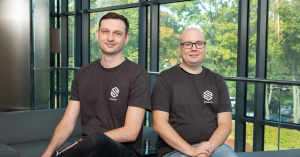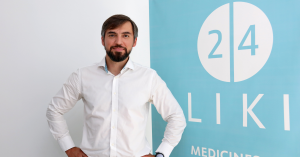An army of nanorobots that distribute drugs to human cells and fight cancer. While it sounds like science fiction, this method is becoming a reality thanks to researchers from the Bioengineering Institute of Catalonia (IBEC).
The research, led by research professor and principal Investigator of the “Smart Nano-Bio Devices” group at IBEC, Samuel Sanchez, wants to advance these innovative solutions to health problems.
The nanorobots (nanobots) are nanomachines capable of “swimming” by themselves and transporting drugs in a targeted way into cancer cells, accumulating in specific locations and reducing side effects.
In this case, the urea-driven multifunctional nanobots called BLADDEBOTS, with a size one million times less than human hair, aim to establish a milestone in nanomedicine and in the intelligent and personalized administration of drugs for the treatment of cancer.
“There are many biological barriers that nanoparticles need to overcome in order to reach the tissue of the cancer tumor and therefore we need to make something that can go faster from A to B, interact with the matrix, target the cells and be more efficient,” Sanchez told The Recursive during a press trip to IBEC.
According to the scientist, using nanobots in a living organism and in patient cells is a disruptive idea that has never been done before, and it paves the way to the development of customized and efficient therapies against bladder cancer, one of the most common and expensive forms of cancers to treat.
The nanobots have all sorts of functionalities, Sanchez explains – they can deliver drugs, DNA switches or antibodies for targeting bladder cancer.
“What we plan to do in the future is to figure out how to go from a few of them to having many of them, and we do this because we want to copy what nature does – nature has this collective intelligence in many scenarios,” Sanchez adds.
Bioengineering as the future of medicine
Croatia-born Marija Matejcic is a postdoctoral research assistant at the Integrative Cell and Tissue Dynamics Group at IBEC. She investigates how physical forces affect the function and behavior of epithelial tissues, which are tissues made of tightly connected cells.
The epithelial tissues line internal and external surfaces of the animal body and perform their diverse physiological functions in a continuous state of self-renewal.
“Currently, I am studying the epithelium that builds the small intestine. In this intestinal epithelium in vivo, stem cells constantly divide, giving rise to new cells that differentiate, and migrate to the tip of the finger-like protrusions called intestinal villi. Here, cells are extruded into the intestinal lumen. I am trying to identify which forces drive this extrusion of cells out of the intestinal tissue,” Matejcic explains.
However, she is not doing this by researching living organisms – instead Matejcic is using a 2D organoid system, which are small pieces of a particular tissue that can grow in cell culture and recapitulate the main behaviors and function of living tissue.
“Typically, organoids are grown in 3D gels as small 3D pieces of tissue. With growing organoids as flat, 2D tissues, like we do, we have even more access and control than in 3D. We can measure forces that live cells exert on the substrate, follow cells as they move, divide and die through microscopy, and apply physical and pharmacological manipulations, like stretch the tissue or block molecular pathways that control the cells’ contractions, respectively,” Matejcic tells The Recursive.
Such examples also illustrate how bioengineering, by applying engineering principles to the fields of biology and healthcare, enhances different techniques and therefore revolutionizes most of the methods used by medical professionals and serves to generate prosperity and to improve health.








